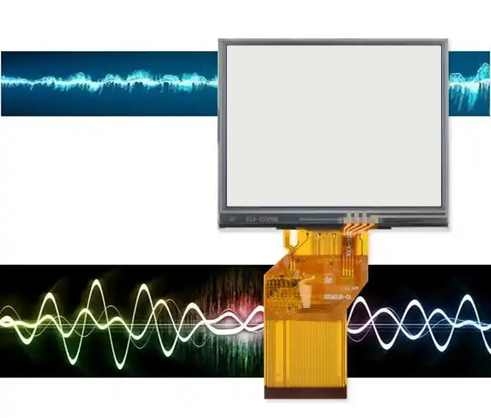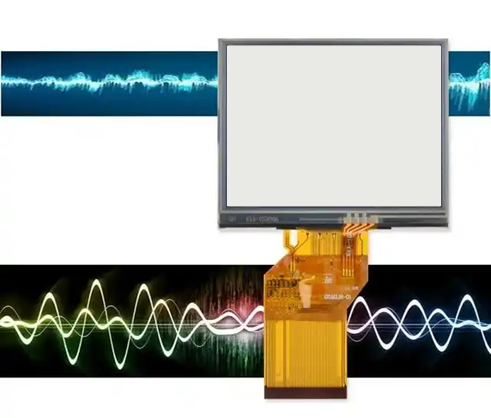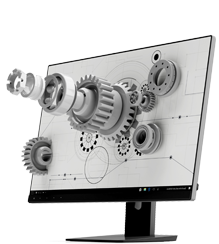Solution to Electromagnetic Interference in TFT LCD Scree

Electromagnetic interference has always been a headache that affects the overall system operation of products When subjected to electromagnetic interference, interference waves of certain frequency and amplitude are generated on power or signal lines
Electromagnetic interference has always been a headache problem that affects the overall system operation of products. When subjected to electromagnetic interference, interference waves of certain frequency and amplitude are generated on power or signal lines, thereby affecting the normal operation of the entire product, which is displayed on the LCD screen.
We all know that TFT LCD module is a passive output module that only receives input signals without any judgment. Therefore, incorrect signals and data will generate incorrect control instructions, resulting in incorrect display effects and patterns. So how can we solve the electromagnetic interference problem of LCD modules? The primary task is to identify the source of interference and use the most effective methods to eliminate and weaken, prevent and shield it. Below, we will analyze several situations where TFT LCD screens are affected by electromagnetic interference and provide solutions.

The Influence of Electromagnetic Interference on TFT LCD Screen
1.The LCD screen appears white/blue
The LCD module may experience white/blue screen during operation. The so-called white screen or blue screen refers to the LCD module only having the backlight on and no response when adjusting the contrast. This is because during the operation of the entire product, electromagnetic interference is applied to the power supply VDD or VSS of the LCD screen, or the RESET signal line, causing the LCD screen module to be reset. The reset result initializes the internal registers of the module and shuts down the display module.
Solution: If interference is applied to the power line, a stabilizing capacitor and a filtering capacitor should be incorporated between the power lines VDD and VSS closest to the liquid crystal display module. If interference is applied to the RESET signal line, a filtering capacitor with a capacitance of 0.1uF or 0.01uF should be incorporated between the RESET signal line closest to the LCD screen and VSS. The selection of capacitance value needs to be based on the actual testing results.
2.LCD screen displays incorrect characters or data
When the product is running, the LCD screen may produce incorrect characters or dots (data errors), which
cannot be restored. Only by powering on again and initializing the register can it be restored. This is because electromagnetic interference is applied to the control signal, causing the register parameters to be modified. The general operation is to write display data, rather than repeatedly writing the main working register parameters,
so the above phenomenon may occur.
Solution: If interference is applied to the transmission line between the product MPU and the display screen,
the following methods can be used,
(1) Use magnetic rings or tin foil to shield the circuit;
(2) Change the direction of the transmission line to avoid interference in the environment;
(3) Shorten the length of transmission lines; Alternatively, a transmission line driver can be added to enhance the driving capability and anti-interference ability. By testing and observing the display effect, determine whether there is improvement.
There is also a situation where interference comes from the motherboard of the product, resulting in incorrect characters appearing on the display screen. The reason may be that the transmission line resistance between the MPU and the LCD screen is too high, making it easy for interference signals to invade. The improvement solution for this situation is to connect a small resistor in series on the transmission line and form a low-pass filtering circuit with the input capacitor at the display module end to eliminate the influence of interference.
3、 The static interference of LCD screens is caused by the static interference of the LCD module casing, especially the LCD panel, which can result in white screens or chaotic displays on the LCD screen. This interference is mostly caused by the iron frame or glass panel of the LCD module, which interferes with the circuit of the LCD module.
Solution:
(1) The iron frame of the LCD module should be properly grounded.
(2) The iron frame of the LCD module is connected to VSS, or the iron frame of the LCD module is floating.
(3) Add insulation pads between the iron frame and metal casing of the LCD module. The thicker the insulation pads, the greater the reduction of static electricity. You can choose these three methods during the testing process and observe the improvement displayed.
4、 There is no external interference source, but there is also a white screen or chaotic display phenomenon.
This situation also belongs to interference, which is internal interference within the system, mainly caused by software program conflicts. Firstly, identify the pattern of interference occurrence. If it occurs during the module writing process, it is easy to cause module crashes, error displays, etc., and the factor of program interruption should be considered. Interrupt programs may occur during the process of writing from the MPU to the LCD screen, which may result in erroneous operations such as modifying control signals or data, causing the display module to crash or display errors. The improvement method is to disable the interrupt response function during the process of calling the LCD screen driver program by the MPU.
Several situations of electromagnetic interference in TFT LCD screens were analyzed, and solutions were introduced. Therefore, we need to first identify the problem, then conduct targeted testing, and finally observe the display effect of the LCD screen to see if there is any improvement. Of course, there are still many situations of electromagnetic interference, which requires our engineers to have sufficient experience to analyze and test.
TFT LCD:https://www.idtdisplay.com/










